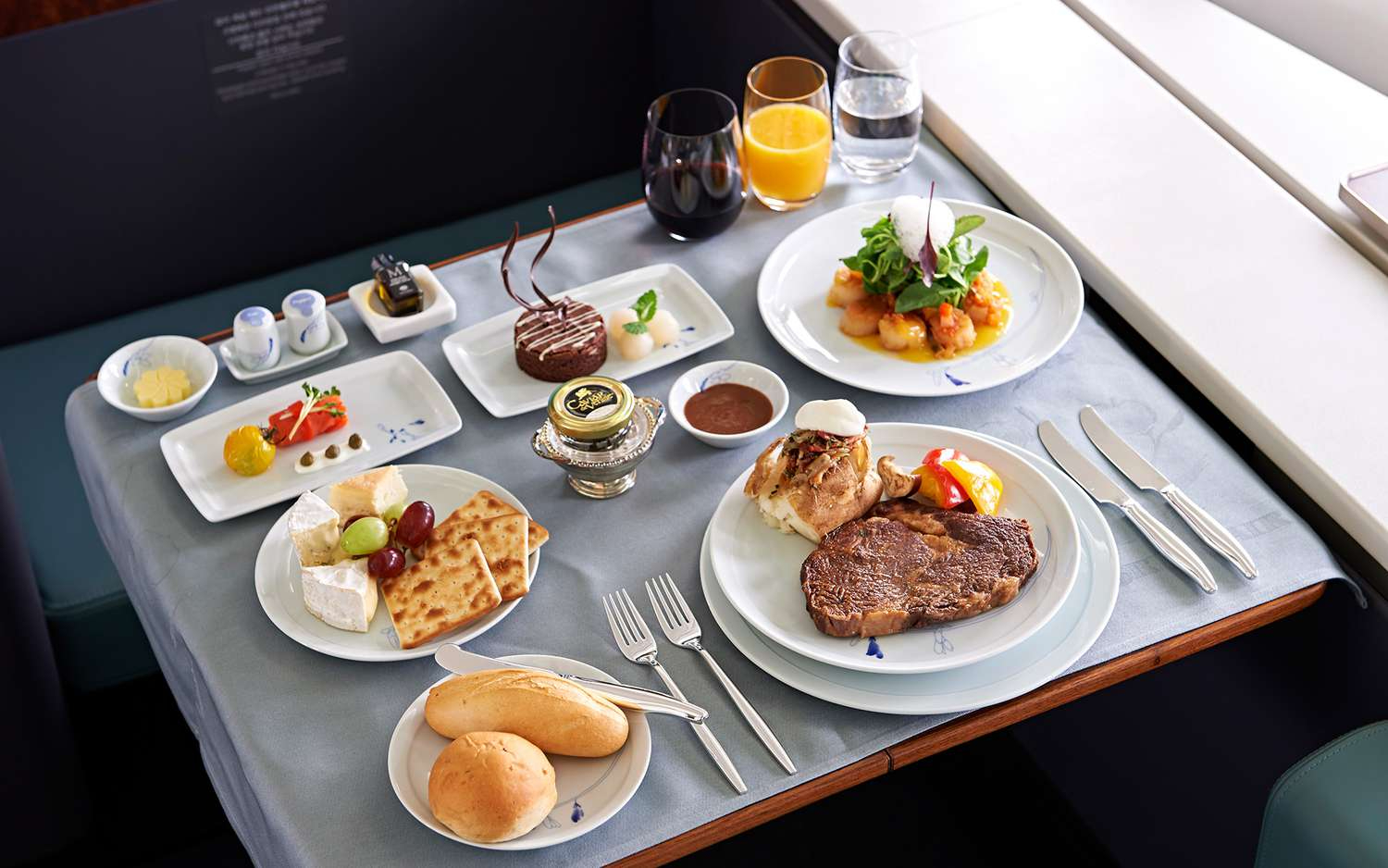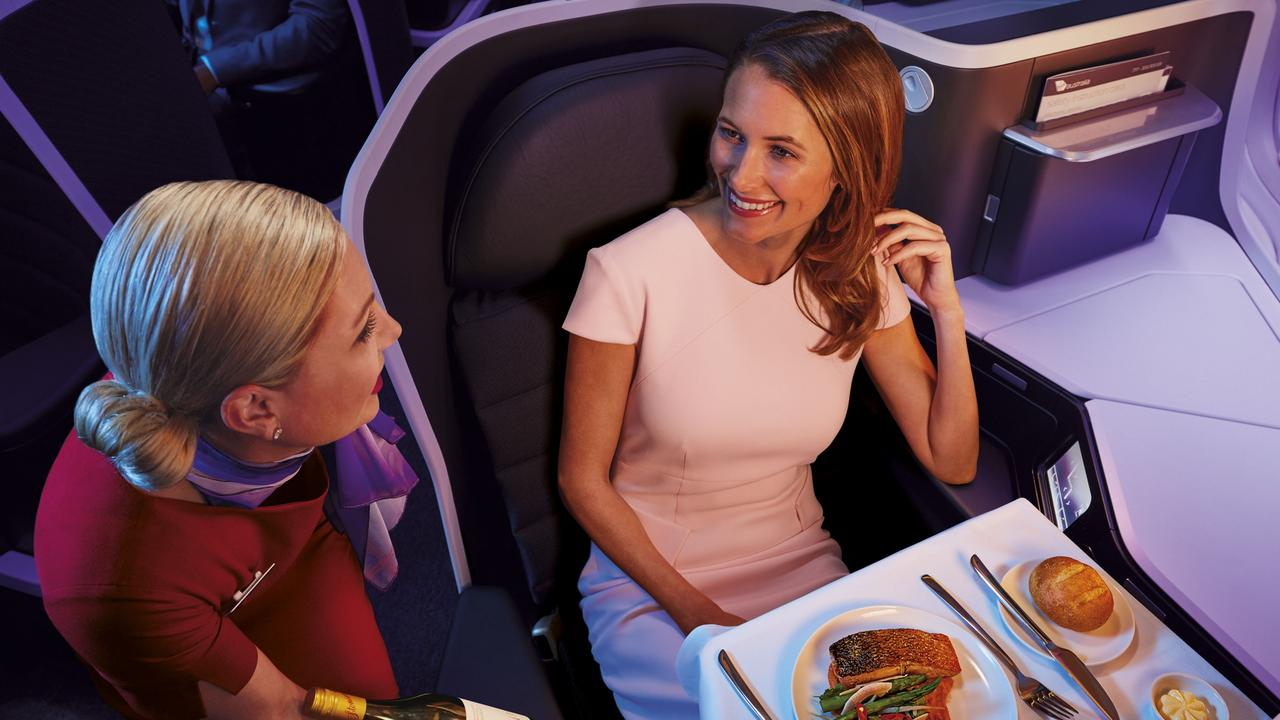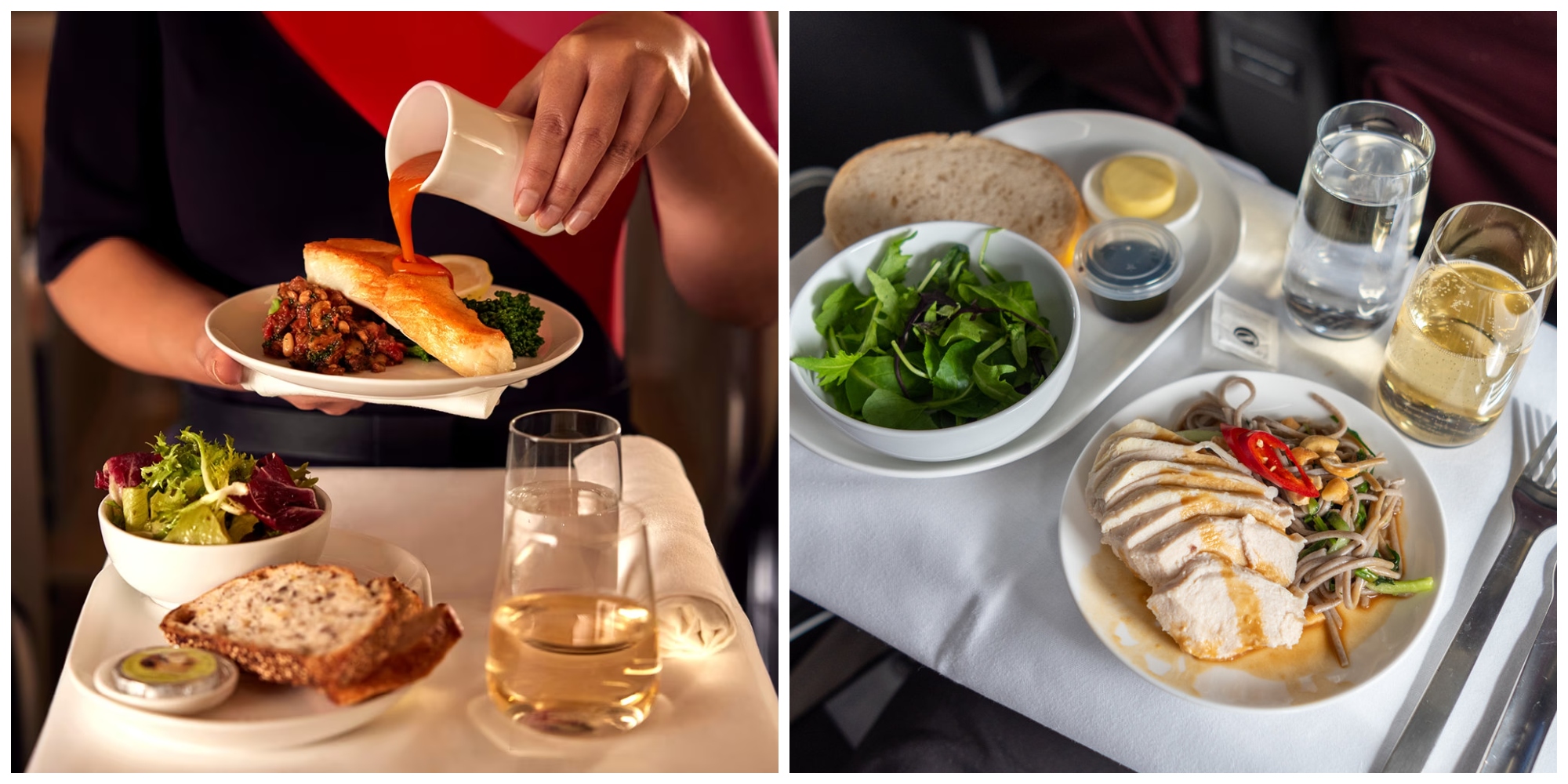Gone are the days when all plane food was disgusting and bland, as airlines have ushered in a new era of gourmet dining in the skies. Taking on the challenge, esteemed chefs from around the world lend their expertise to make gastronomy in the clouds possible. Here’s how.

In the air, Chef Luke Mangan explains it’s best to keep it simple. While it may seem difficult to put good food on a plane, he testifies that as long as the produce is great, the meal should be too, so long as things are kept simple. In his work with Virgin Australia, using the best of Australian produce is of utmost importance for their business class passengers. Part of this is changing ingredients with seasonality, along with extensive testing of every meal option.

The test kitchen is the ideal place to sort through what may be a good option for the air, and what might not be as suitable. One frequent stumbling block of the aeroplane food industry is that beef often turns into a leathery texture. Magnan explains that beef is not the ideal cut of meat to put on a plane, due to its specific cooking times that are not facilitated by a busy in-flight service. The best proteins are the ones with high fat content, and that’s why braising meat works so well, as well as oily fish.

When coming up with a new menu, Chef Neil Perry with Qantas Airlines suggests a preliminary chat about what produce is regionally good, what is in fashion and in season, and what the airport’s strengths are. From that point, the teams work hard to make sure their dishes are deliverable in the sky, meaning they can be put in an oven and reheated and still come out the other end tasting nice. Once the final tweaks are made, the dish is ready to fly.

At the world’s largest airline catering facility, Qatar Airways Catering Company, maintaining the freshness of ingredients is paramount. Every morning, more than 165,000 pounds of fresh fruit and vegetables are brought in, to be sliced, diced and served by that very same evening. This is a laborious effort, as each vegetable must be washed, sanitised, peeled, chopped and sliced by hand. Even in economy class, no canned fruit or vegetables are on site, as all ingredients used are fresh, elevating the quality of the food. They even make fresh pasta!

Of course, another level of preparation ensuring the quality of food on planes is the thorough hygiene and sanitation precautions. Every aspect of preparation and storage is controlled for safety. In the interest of food safety, the temperature of the stored food is also closely monitored, with all food stored at 4°C before being reheated and served.

Food on aeroplanes have certainly skyrocketed in quality over the years, but some successful dishes are brought back again and again. That being said, new meals are being tested every day. In the future, we could see even more refined cooking techniques being used to delight us in the skies, such as sous-vide.